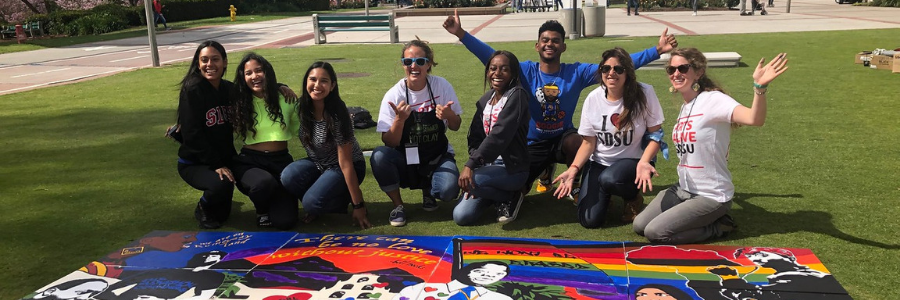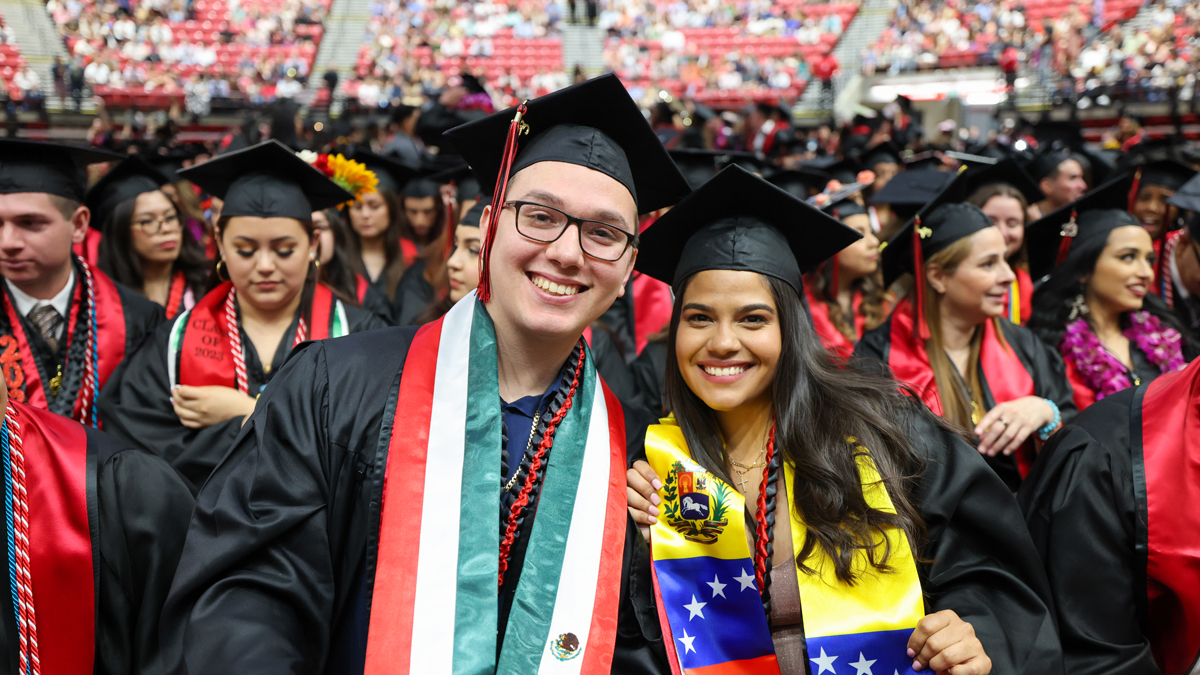Student Unites Resource Centers and Community through Inclusive Art

As part of her community service project for SDSU’s Rotaract Club, junior Public Health major Nenechi Nnachi decided that she wanted to create a mural that would unite four organizations on campus: the Pride Center, the Women’s Resource Center, the Black Resource Center, and the Center for Intercultural Relations.
Nnachi contacted Arts Alive SDSU who connected her with Masters of Fine Arts candidate in sculpture, Kline Swonger, to help make her vision a reality. The mural is composed of 12 canvases and split up into four sections to represent each of the resource centers on campus; each of the sections represents symbols of empowerment that the resource centers wanted to see.
“There are so many social justice murals around the world,” said Nnachi. “I thought this project would be a great way to bring underrepresented communities on campus together in celebration rather than in frustration on the lack of action taken to protect us as we get an education here.”
Nnachi got the idea for the mural after hearing the news about the Christchurch shooting in New Zealand and acts of hatred against the Black Resource Center. She said that she wanted to make something beautiful to stand out against the hatred.
Nnachi said that Jada Johnson, who works for the Center for Intercultural Relations, helped her by acting as a liaison between the other resource centers and collecting the symbols they wanted to have on the mural.
“We have people on campus who have never been to our identity centers and I want people to understand that you do not need to identify with these centers to be an ally,” said Nnachi. “I wanted to give the SDSU community a way to learn a thing or two about historical figures that have made an impact on women, the black community and the LGBTQ+ community.”
While the mural was designed and prepared by Swonger, all students and members of the community were invited to paint the mural at the Arts Alive Festival on May 2.
“It was a very inclusive project. There were people from the different organizations coming out to get involved and it was also open to the public as a way of promoting awareness of historical figures and images that are important to these identity centers on campus, ” said Swonger.
Nnachi said that allowing anyone to help work on this mural shows that creating change is possible. “All it takes is one person to speak up and do something about injustice,” said Nnachi.
The canvases have now moved to the Pride Center, the Women’s Resource Center, the Black Resource Center and the Center for Intercultural Relations where they will be on display.

